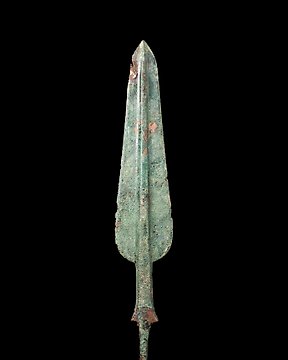
洛雷斯坦 青铜矛头 (没有保留价)
编号 81554191

编号 81554191

A finely engraved Mesopotamian black hardstone cylinder seal, carved on the sides with four zoomorphic figures and a male figure. The bearded male figure wears a headdress and faces the right. To each side of him is a pair of animals engaged in combat. One is possibly an ibex whilst the other animal is possibly a lion. Both animals stand on their hind legs and the lion looks to be pouncing onto the ibex. This presents a contest scene, a popular genre in Mesopotamian seals. The black hardstone is most probably haematite. Minor encrustations within the incisions and some wear of the surface due to age. The seal is perforated longitudinally for suspension.
Seals were often made of stone however there are also examples rendered in bone, ivory, faience, glass, metal, wood, and even sun-dried or baked clay. In the ancient world, seals guaranteed the authenticity of marked ownership – as such, they were instrumental in legal transactions, and in the protection of goods against theft. Seal amulets with stylised animals have been found throughout Mesopotamia in contexts dating to the late fourth millennium BC, although stamp seals and cylinder seals were the predominant types in the ancient Near East.
Measurements: H 2.8cm x W 1.7cm
Provenance: Ex SM collection, London, acquired 1970s-2010.